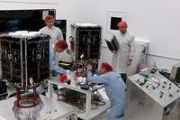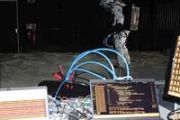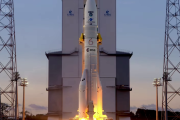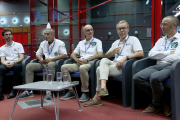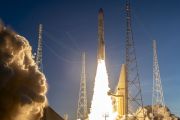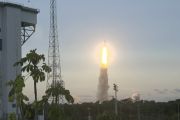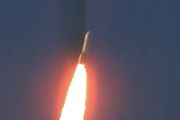
Copernical Team
Passed the Turing Test living in Turing Futures
 A recent perspective published in the Nov. 13 issue of Intelligent Computing has highlighted how modern artificial intelligence systems have fulfilled Alan Turing's vision of machines capable of learning from experience and engaging in human-like conversations. Authored by Bernardo Goncalves of the University of Sao Paulo and University of Cambridge, the paper explores how transformer-based AI s
A recent perspective published in the Nov. 13 issue of Intelligent Computing has highlighted how modern artificial intelligence systems have fulfilled Alan Turing's vision of machines capable of learning from experience and engaging in human-like conversations. Authored by Bernardo Goncalves of the University of Sao Paulo and University of Cambridge, the paper explores how transformer-based AI s Mystery of supra-thermal ions in fusion plasmas solved by advanced collision models
 The pursuit of nuclear fusion as a clean and abundant energy source has made significant strides with the advent of inertial confinement fusion (ICF). This technology relies on compressing deuterium-tritium (DT) fuel to extreme temperatures and pressures to initiate fusion. While neutrons generated in this process primarily contribute to electricity production, alpha particles remain in the fuel
The pursuit of nuclear fusion as a clean and abundant energy source has made significant strides with the advent of inertial confinement fusion (ICF). This technology relies on compressing deuterium-tritium (DT) fuel to extreme temperatures and pressures to initiate fusion. While neutrons generated in this process primarily contribute to electricity production, alpha particles remain in the fuel A call for collaboration in solar energy meteorology research
 Solar energy has become a leading renewable energy source, renowned for its efficiency and cost-effectiveness in reducing dependency on fossil fuels. However, optimizing solar energy production presents challenges that extend beyond traditional engineering solutions, prompting the rise of a specialized field known as solar energy meteorology.
This interdisciplinary field focuses on evaluat
Solar energy has become a leading renewable energy source, renowned for its efficiency and cost-effectiveness in reducing dependency on fossil fuels. However, optimizing solar energy production presents challenges that extend beyond traditional engineering solutions, prompting the rise of a specialized field known as solar energy meteorology.
This interdisciplinary field focuses on evaluat Are we ready for the ethical challenges of AI and robots
 Artificial intelligence (AI) and AI-enabled robots are rapidly integrating into everyday life, evolving from simple tools into entities that resemble human partners. This transformation brings critical ethical and legal challenges, ranging from privacy and safety to the regulation of increasingly autonomous systems.
The *Cambridge Handbook of the Law, Policy, and Regulation for Human-Robot
Artificial intelligence (AI) and AI-enabled robots are rapidly integrating into everyday life, evolving from simple tools into entities that resemble human partners. This transformation brings critical ethical and legal challenges, ranging from privacy and safety to the regulation of increasingly autonomous systems.
The *Cambridge Handbook of the Law, Policy, and Regulation for Human-Robot DARPA's ASIMOV seeks to develop Ethical Standards for Autonomous Systems
 CoVar, a prominent developer of AI and machine learning solutions for the Department of Defense, has secured a multi-year contract with the Defense Advanced Research Projects Agency (DARPA) to contribute to the Autonomy Standards and Ideals with Military Operational Values (ASIMOV) program. This initiative aims to establish a quantifiable framework for assessing the ethical readiness of autonomo
CoVar, a prominent developer of AI and machine learning solutions for the Department of Defense, has secured a multi-year contract with the Defense Advanced Research Projects Agency (DARPA) to contribute to the Autonomy Standards and Ideals with Military Operational Values (ASIMOV) program. This initiative aims to establish a quantifiable framework for assessing the ethical readiness of autonomo Kenya investigating fallen space debris
This request seems a bit unusual, so we need to confirm that you're human. Please press and hold the button until it turns completely green. Thank you for your cooperation!
Press and hold the button
If you believe this is an error, please contact our support team.
185.132.36.159 : 5c4fc80b-340b-42ae-b2d4-9a490263
How to catch the Quadrantids, the first meteor shower of 2025
This request seems a bit unusual, so we need to confirm that you're human. Please press and hold the button until it turns completely green. Thank you for your cooperation!
Press and hold the button
If you believe this is an error, please contact our support team.
185.132.36.159 : 44fa2ef5-a91d-488e-812e-6fe14666
Sun emits three powerful solar flares
 The Sun unleashed three significant solar flares on December 29, 2024, recorded at peak times of 2:18 a.m. ET, 11:14 p.m. ET, and 11:31 p.m. ET. These events were documented by the Solar Ultraviolet Imager operated by the National Oceanic and Atmospheric Administration (NOAA), a continuous observer of solar activity.
Solar flares, potent bursts of energy from the Sun, have the potential to
The Sun unleashed three significant solar flares on December 29, 2024, recorded at peak times of 2:18 a.m. ET, 11:14 p.m. ET, and 11:31 p.m. ET. These events were documented by the Solar Ultraviolet Imager operated by the National Oceanic and Atmospheric Administration (NOAA), a continuous observer of solar activity.
Solar flares, potent bursts of energy from the Sun, have the potential to SpaceX knocks out 1st of final 2 Space Coast launches of 2024
This request seems a bit unusual, so we need to confirm that you're human. Please press and hold the button until it turns completely green. Thank you for your cooperation!
Press and hold the button
If you believe this is an error, please contact our support team.
185.132.36.159 : c8f34ead-f810-4c45-a547-207790f1
NASA's micro-mission Lunar Trailblazer will make macro-measurements of the lunar surface in 2025
This request seems a bit unusual, so we need to confirm that you're human. Please press and hold the button until it turns completely green. Thank you for your cooperation!
Press and hold the button
If you believe this is an error, please contact our support team.
185.132.36.159 : d437a4b9-338a-46eb-9336-ac88770a






